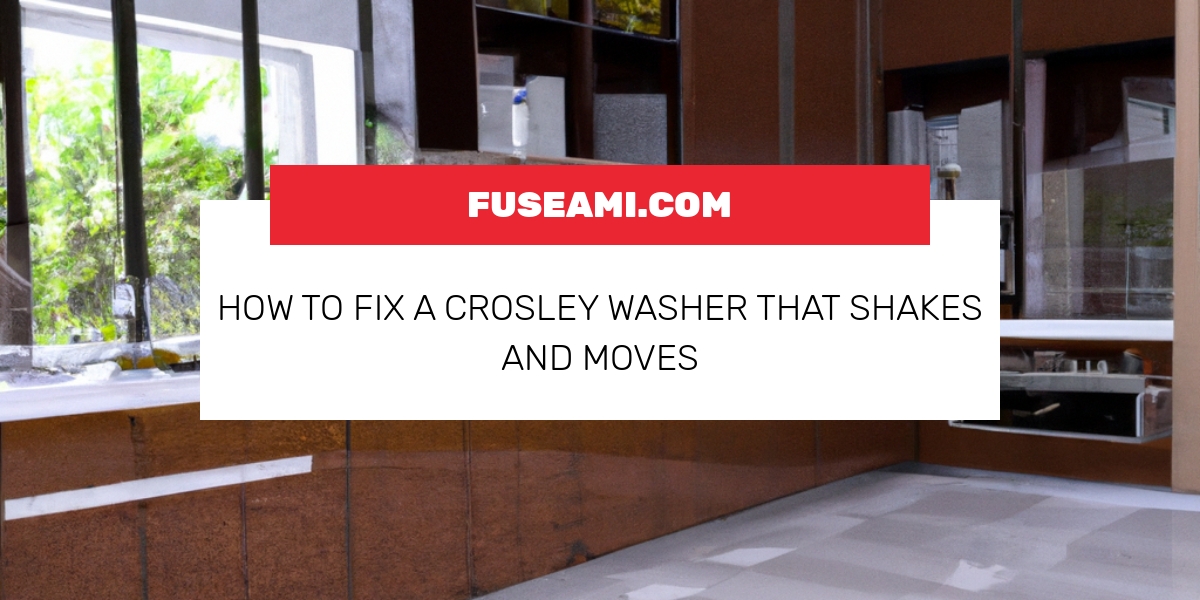Shock Absorber
To access the shock absorbers, also known as the struts, you’ll have to remove either the front or rear panels. Washers are prone to shake or move in the event that they’re underweight. Shock absorbers that have been damaged or weak will cause the machine to produce loud noises during spin cycles. It is crucial to fix the problem as soon as you can. How do you check the shock absorbers in a Crosley washing machine.
- Before you begin washing your clothes, disconnect the machine.
- Locate the shock absorbers. You will need to take either the front or rear panels off, based on the model you own.
- Check shock absorbers for worn attachments, weak dampening action or leaks.
- New shock absorbers are necessary in the event of any of the symptoms listed above. Both shocks must be replaced at the same time.
Tub springs and suspension springs
Your tub assembly in your Crosley washing machine is supported or suspended from the base by its suspension springs. They absorb and absorb vibrations generated by the spin cycles of your Crosley washing machine. Sometimes, these springs can become bent, damaged or even broken, which can cause excessive noise and vibration when spinning. How to check the springs of your Crosley washing machine’s suspension
- Before starting, turn off the power supply.
- To access the suspension springs, take off the top or front panels from the machine.
- Check for stretching or damage and ensure that they are securely fastened on both sides. Replace springs that are already in tension. Protective clothing is essential.
- Replacement suspension springs are required in the event of any stretch, injury, or wear. We recommend that you replace the springs in your suspension that are damaged immediately. They wear out at about the same rate.
Snubber Ring & Damper Pad & Tube Wear Pads
A snubber ring is an item that dampens vibrating of Crosley washing machines in spin cycles. This is typically located in the base of the machine. It serves as a cushion for the tub support and base. Wear pads for tubs and snubber rings are usually made of hard plastic. However, some damper pads can be made from lubricated , felt. Each design eventually wears down, and the tub could be moved too much. They could also wear down until the tub support is in contact with the base of the metal washer. The washer could shake out of control when this happens. How to check the damper pad within your washer:
- Unplug the washer and take off the front panel.
- Find and examine the snubber. To examine the snubber you will need to take off the tub springs.
- There is white dust around or in the vicinity of the plastic-style snubber. Look out for dry or dislodged pad material when using the felt style.
- You require a replacement nubber ring when you encounter any of the symptoms listed above.
Tub Dampening Strap
Top load washers equipped with tub dampening bands are employed to cushion tub movement throughout spin cycles. Four straps are secured to the tub’s top and corner edges. Regular use can cause the rubber straps to wear out. The tub might come into contact with the cabinet while spinning if the straps become stretched or damaged. The washer shakes and vibrate loudly, making an eerie sound. A lot of use and heavy loads can cause strain on the straps and cause premature failure. How do you check tub dampening buckles on washers.
- To begin, unplug the machine. Then, you can move the cabinet open to reveal the tub dampening straps.
- Each strap is attached to the tub, and one corner on the cabinet. Be sure to examine the tub dampening slings attentively for wear, fraying or damage.
- f you have any of these symptoms, you’ll need four tub dampening bands to be replaced. It is suggested that all four of your straps be replaced as soon as they are worn out since they wear around the same time.
Support Leg for the washer
Leveling Legs for the washer assist in supporting it. They can be adjusted so that they can be leveled. Certain models come with four threaded feet, while others have two threaded , and two back legs that self-level. Make sure that your washer is level and securely seated on its four legs if it vibrates or shakes during the spin cycle. How can you determine the levelling legs of washers?
- Although this repair won’t require dismantling the appliance, we suggest that you disconnect it prior.
- To reach the feet, turn your washer machine so that it is facing forward or sideways.
- Start by making sure that the leveling feet of all levels are equal. Conduct a test in the event that you discover one or more levels feet is not level. If the problem continues, check for signs of wear and damage to the feet and ensure they are properly threaded. If you experience any of these problems, Replacement leveling feet could be necessary.



